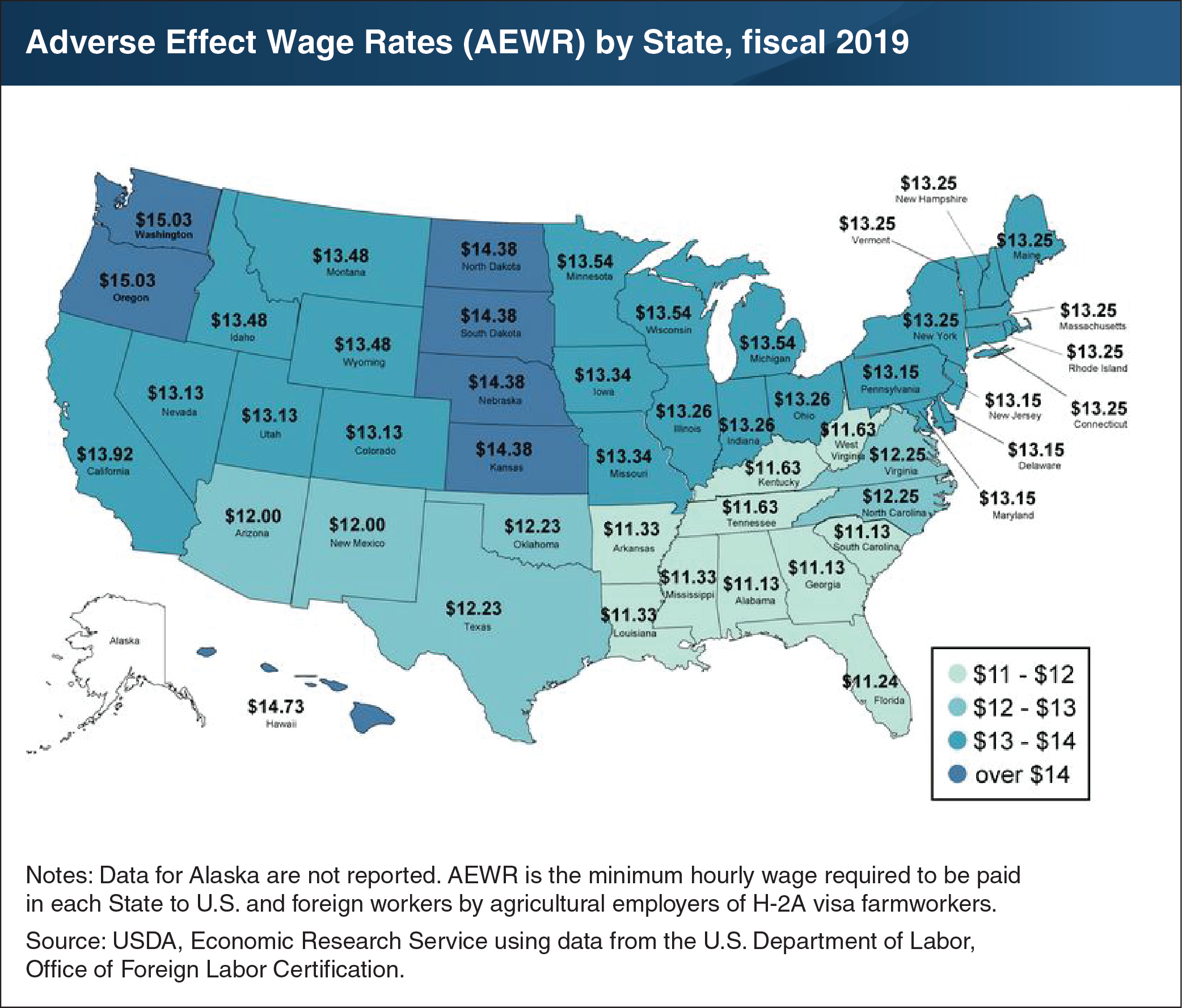Minimum hourly agricultural wage rates are highest in Washington and Oregon
- by Marcelo Castillo and Skyler Simnitt
- 3/2/2020

The H-2A Temporary Agricultural Program provides a legal means to bring in foreign-born workers into the United States on a short-term basis. Workers employed on an H-2A visa may remain in the U.S. for up to 10 months at a time. Employers must demonstrate and the U.S. Department of Labor must certify that efforts to recruit U.S. workers were not successful. Employers must also pay a State-specific minimum wage, known as the Adverse Effect Wage Rate (AEWR). The rate is set at the region’s average farm wage to prevent H-2A employment from negatively affecting domestic farmworkers by lowering their wages. For fiscal 2019, this minimum hourly wage was highest in Oregon and Washington at $15.03, followed by Hawaii at $14.73. The wage rate was also high in the Dakotas, Nebraska, and Kansas at $14.38. By comparison, Alabama, Georgia, and South Carolina had the lowest minimum wages at $11.13. This chart appears in the Economic Research Service topic page for Farm Labor, updated January 2020.

